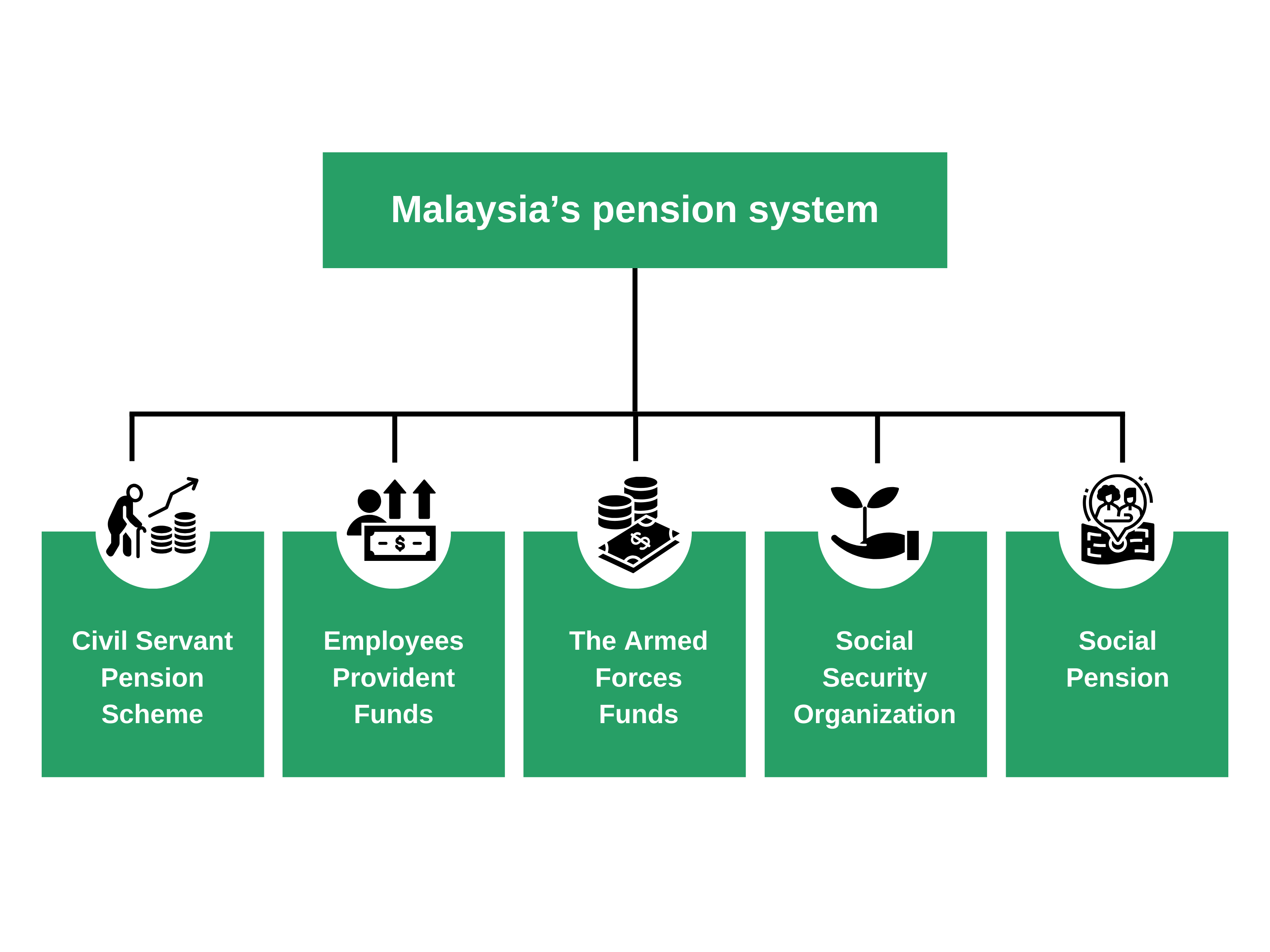Insecurity in Old Age: A Comparative Case Study of Social Pension Programs between Indonesia and Malaysia
Main Article Content
Abstract
Objectives: The social pension is considered a welfare program for the elderly that does not require contribution. Studying the policy and implementation of the social pension program in the ASEAN region is intriguing as many countries in the region are entering an aging society. This study focuses on the social pension programs for the elderly, comparing the current situations in Indonesia and Malaysia. It also analyzes the current problems and challenges in implementing social pension in both countries.
Methods: This research is a qualitative study utilizing the documentary research method, where the researcher investigates and gathers information from relevant documents. The content scope of this study includes examining the development of elderly welfare policies in the countries of Indonesia and Malaysia. The study covers the period from 1998 to 2022.
Results: This study found that there are similar challenges, especially in terms of relatively low coverage, accessibility issues due to the archipelagic geography, and sustainability concerns in project implementation due to reliance on tax-funded budgets when comparing the social pension for the elderly in Indonesia and Malaysia. Additionally, with the continuous increase in the elderly population due to medical advancements coupled with low birth rates, both countries face a labor shortage, impacting the overall economy. This, in turn, affects the sustainability of social pension programs in both countries, leading to insecurities for the elderly population in their post-retirement lives.
Application of this study: The findings of this study can be applied to shaping welfare policies for the elderly in ASEAN countries with similar contextual aspects. Furthermore, these findings can be utilized in planning strategies to address the imminent increase in the elderly population in the near future.
Downloads
Article Details

This work is licensed under a Creative Commons Attribution-NonCommercial-NoDerivatives 4.0 International License.
References
Adioetomo, S. M., Howell, F., McPherson, A. & Priebe, J. (2013). “Social Assistance for the Elderly in Indonesia: An Empirical Assessment of the Asistensi Sosial Lanjut UsiaTerlantar Programme”, TNP2K Working Paper 5-2013. Tim Nasional Percepatan Penanggulangan Kemiskinan (TNP2K), Jakarta, Indonesia.
Arifianto, A. (2004). Public Policy Towards the Elderly in Indonesia: Current Policy and Future Directions.
Asher, M. & Bali, A. S., (2015). "Public Pension Programs in Southeast Asia: An Assessment," Asian Economic Policy Review, Japan Center for Economic Research, 10(2), 225-245, July.
Department of Statistics. (2013). Malaysia Economic Statistics, Time Series 2013. Putrajaya: DOSM
Hamid, T. A., Masud, J., Yahaya, N. & Chai, S. T. (2006). Socioeconomic status and health among older women in Malaysia. Asia Pacific Journal of Public Health, S18, 42-53.
Holzmann, R. (2014). Old-age financial protection in Malaysia: Challenges and options. Social Protection and Labour Discussion Paper: No. 1425. Washington, DC: World Bank. Retrieved 20 September 2023, from http://documents.world bank.org/curated/en/2014/11/20425543/old-age-financial-protection-malaysia-challenges-options.
Jaafar, R., Daly, K. J., & Mishra, A. (2019). Challenges facing Malaysia pension scheme in an era of ageing population, Finance Research Letters, 30(C), 334-340.
Kang, J. Y., Park, S., & Ahn, S. (2022). The effect of social pension on consumption among older adults in Korea. The Journal of the Economics of Ageing, 22, 100364. https://doi.org/10.1016/j.jeoa.2021.100364
Mahon, A., McNeill, K., & Heymann, J. (2015). Pension programs around the world: new comparative global policy data. Journal of Comparative Policy Analysis: Research and Practice, 17(2), 192-207.
Ministry of Finance Malaysia. (2018). 2018 Budget. Kuala Lumpur: Ministry of Finance Malaysia. Retrieved 5 May 2023, from http://www.treasury.gov.my/pdf/budget/speech/bs18.pdf.
Ministry of Social Affairs. (2011). Directorate General for Social Rehabilitation, Directorate for Older Persons and Social Services. Final Report on the Study of the Social Pension of Three Provinces: DKI Jakarta, Banten and West Java. Mimeograph, 2010.
Pension Watch. (2023). Malaysia. Retrieved 5 May 2023, from http://www.pension-watch.net/country-fact-file/malaysia.
Statistik, B. P. (2009). Statistik Indonesia 2009. [Statistical Yearbook of Indonesia 2009]. Jakarta: BPS. (In Indonesian)
TNP2K. (2020). The Situation of the Elderly in Indonesia and Access to Social Protection Programs: Secondary Data Analysis. Jakarta, Indonesia.
United Nations, Department of Economic and Social Affairs, Population Division. (2017). World Population Prospects: The 2017 Revision, Key Findings and Advance Tables. Working Paper No. ESA/P/WP/248.
Zarianah, M. (2011). Demographic transitions in Malaysia: The changing roles of women. 15th Conference of Commonwealth Statistician, New Delhi, India, 7-10, Feb., 2011.


